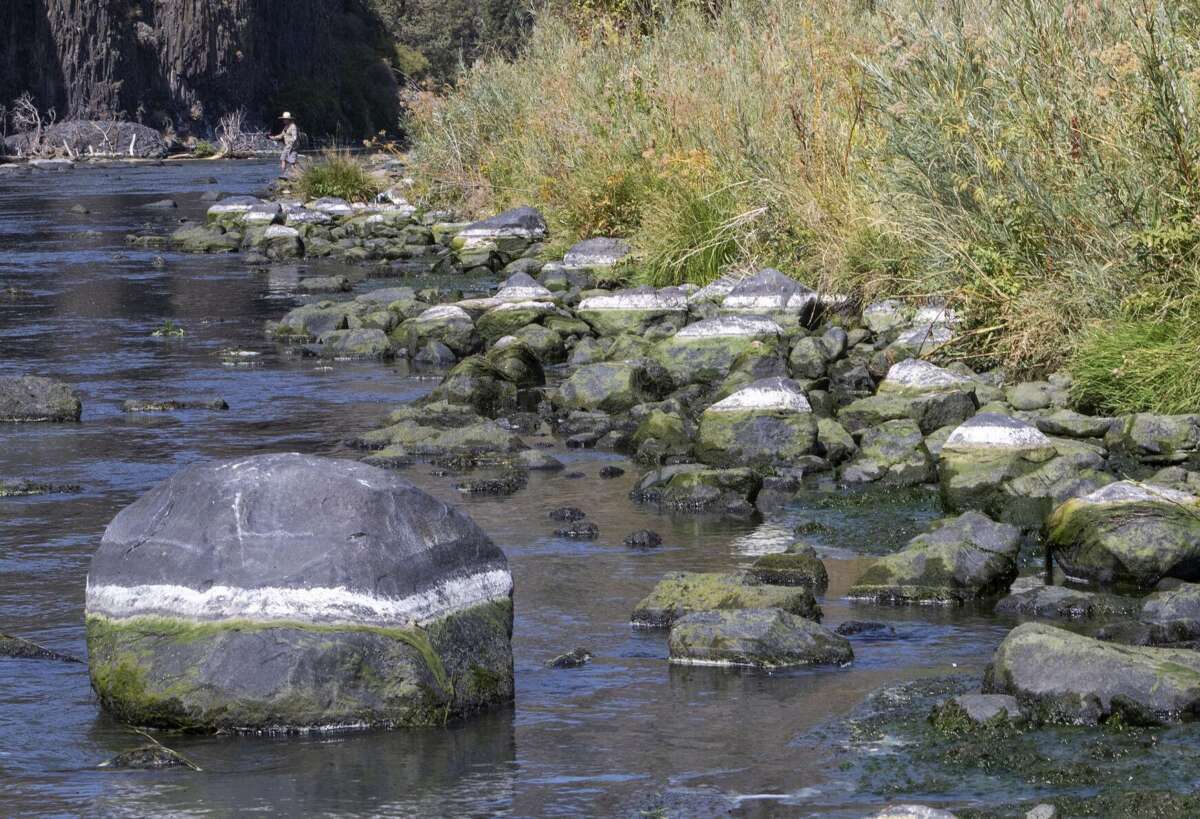Jerry George, district fish biologist with ODFW, described the incident as an unfortunate circumstance and said the department does not take the stressful and lethal conditions in the river lightly.
“Following a water availability shortage and a curtailed irrigation season, the Crooked River downstream of Bowman Dam experienced six weeks of unprecedented low fall stream flows,” said George.
Ahead of the water drawdown, which took levels from 175 cubic feet per second down to 10 cfs in just a few days, ODFW closed the recreational fishery from Bowman Dam to the U.S. Highway 97 bridge near Terrebonne.
During weeks of reduced water flow, ODFW observed challenging conditions for fish and barriers to fish passage in the stream channel area. In some locations, the channel width had shrunk 80-90%. ODFW observed that this resulted in large areas of macroinvertebrate mortality and drying of aquatic vegetation.
Despite the challenging conditions, no mass fish die-offs were documented or reported by the public. However, George reported a decrease in the number of dead mountain whitefish and redband trout. This mainly occurred following the initial reduction in water, which stranded fish in some locations.
Raccoons, otters, and other predators were reportedly very active when water levels were reduced, using the opportunity to make an easy meal of the stranded fish and crayfish.
“Fish population monitoring near the end of the low-flow period documented overall survival of redband trout and mountain whitefish,” said George. “However, density estimates were reduced compared to before the drop in flows.”
ODFW estimated an 80% decline in mountain whitefish, from 6,950 to 896 fish per mile. It also estimated a 20% decline from 2,083 to 1,675 fish per mile.
“When compared to June, we also found that size distribution had shifted to smaller juvenile redband trout. Very few large trout (15 inches or less) appeared to survive the low flows,” he said. “Larger fish were very rare or gone.”
George added that it’s not clear why the numbers of mountain whitefish had declined so steeply, but he does not believe it was from a mass fish die-off, as there was no evidence of this in the form of large numbers of dead fish.
A possible explanation is that fish simply moved downstream in search of better conditions when the water level dropped. Fish tend to migrate in response to abrupt changes in flow, temperature and dissolved oxygen levels, which can occur when water levels drop. Another possibility is that predators were picking up large numbers of fish from the shallow water, thereby removing the evidence of a mass die-off.
George said sampling is needed again in the spring to determine the long-term impacts of the water reduction, as loss of invertebrate production could have lasting impacts on the river.




